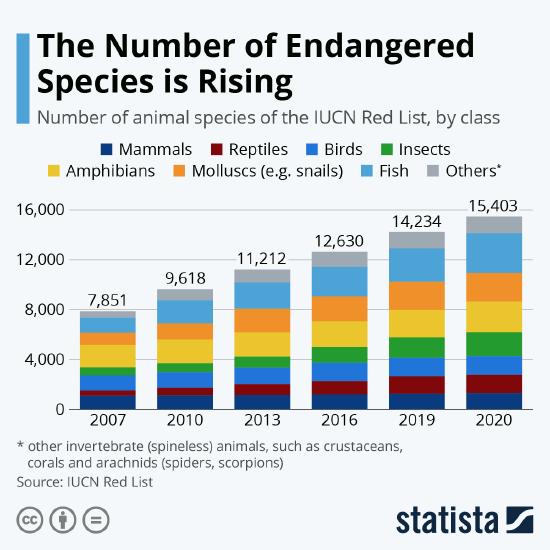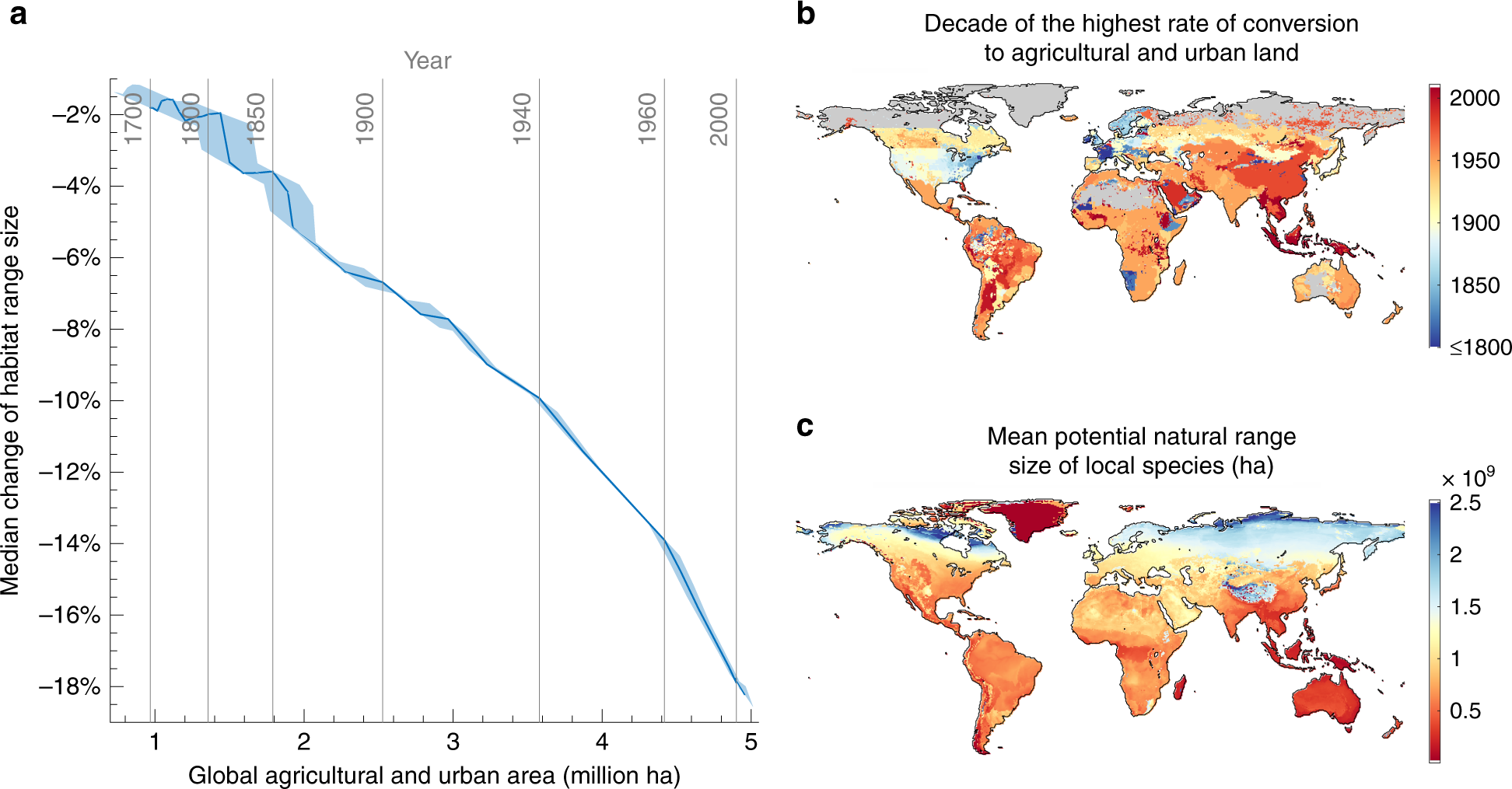12.5: Which Species are at Risk of Extinction?
- Page ID
- 71503

The number of species at risk of extinction continues to rise (Figure 12.5.1). An important task for conservation biologists is to identify and prioritize those species in greatest danger of extinction. Accomplishing this task requires biologists to collect and review all the information we have on each species. To facilitate this major undertaking, the IUCN has formalized the evaluation and reporting of threatened species assessments using an internationally accepted standard of conservation categories to reflect a taxon’s risk of extinction. These nine categories (Figure 12.5.2), known as Red List Assessments (IUCN, 2017), are:
- Extinct (EX). These species are no longer known to exist.
- Extinct in the Wild (EW). These species exist only in cultivation, in captivity, or other human-managed situations.
- Critically Endangered (CR). These species have an extremely high risk of going extinct in the wild.
- Endangered (EN). These species have a very high risk of extinction in the wild.
- Vulnerable (VU). These species have a moderately high risk of extinction in the wild.
- Near Threatened (NT). These species are close to qualifying for a threatened category but are not currently considered threatened.
- Data Deficient (DD). Inadequate information exists to determine the risk of extinction for these species.
- Least Concern (LC). These species are not considered Near Threatened or threatened. (Widespread and abundant species are included in this category.)
- Not Evaluated (NE). Species that have not yet been evaluated.

These categories, and the Red List Criteria used to classify each species (Table 12.5.1), are broadly based on population viability analysis, and consider population size, population trends, and habitat availability. Species that are Extinct in the Wild, Critically Endangered, Endangered, and Vulnerable categories are officially considered “threatened with extinction”. The advantage of this system is that it provides a standard protocol by which decisions can be reviewed and evaluated according to widely accepted yet flexible criteria. Consequently, species, subspecies, varieties, populations, and subpopulations can be assessed on a global or regional level, all under a unified set of standards. The resultant threat status assessment forms the basis of Red Data Books and Red Lists: detailed lists of threatened wildlife by group and/or by region compiled by the IUCN and its affiliate organizations. All global (and many regional) Red List assessments are freely available at http://www.iucnredlist.org, with feedback links provided from which anyone can alert the IUCN if they find errors or have suggestions for improvements.
|
Red List criteria A–E |
Summary criteria used to evaluate a taxon as Critically Endangered |
|---|---|
|
A. Population size declining |
The population size has declined by 90% (or more) over last 10 years or 3 generations (whichever is longer). |
|
B. Geographical range declining |
The species is restricted to < 100 km2 and it occurs at a single location and its distribution range is observed/expected to decline. |
|
C. Small and declining populations |
There are less than 250 mature individuals left and population has declined by 25% (or more) over last 3 years or 1 generation (whichever is longer). |
|
D. Small populations |
There are less than 50 mature individuals left. |
|
E. Population viability analysis |
There is a 50% (or greater) chance of extinction within 10 years or 3 generations. |
a Additional criteria for Critically Endangered, as well as criteria for Endangered and Vulnerable listings can be found at http://www.iucnredlist.org.
A decline in geographic range is a predictor of vulnerability to extinction. A 2020 study published in Nature Communications determined that species of birds, amphibians and mammals have lost approximately 18% of their natural, historic range size and may lose up to 21% by 2100 (Beyer and Manica 2020). Figure 12.5.3 depicts the relationship between declining range size and habitat loss due to urban and agricultural land conversion.

Course-filter assessments
To fill Red List species assessment gaps, conservation biologists are increasingly relying on broader metrics, or coarse-filter assessments, to identify groups of species that are threatened with extinction. One such method, which reduces the need to evaluate every individual species, is to identify ecosystems that are threatened. This premise rests on the assumption that any threatened ecosystem will contain many threatened species. Hence, protecting and restoring threatened ecosystems will simultaneously allow many populations living in those ecosystems to recover. To facilitate this type of coarse-filter assessment, the IUCN recently established a Red List of Ecosystems (RLE, http://iucnrle.org). The RLE assesses ecosystem status against five criteria: (1) distribution declines, (2) distribution restrictions, (3) environmental degradation, (4) disruption of ecological processes and interactions, and (5) quantitative estimates for risk of ecosystem collapse (Keith et al., 2013). While the ecosystem assessment protocol was only recently developed its holistic strategy promises a more comprehensive accounting of local biodiversity which could be more informative than an accumulation of single species assessments.


